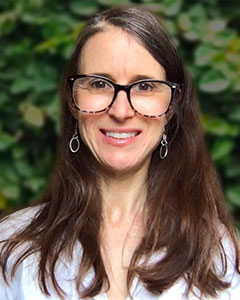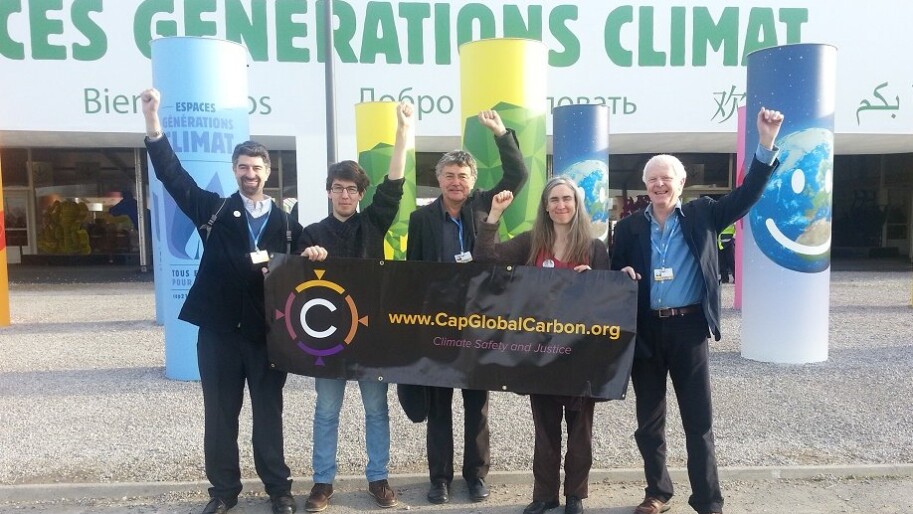by Mike Sandler
Without a doubt, the Paris Agreement is historic. It provides some much-needed relief to the UN process and the leaders of the world who suffered a major setback after the UN’s Copenhagen breakdown in 2009. It lets a term-limited President of the United States claim to have set laudably ambitious goals, and it lets him enjoy his retirement, sipping margaritas on a beach somewhere while others try to implement actual actions to meet the goals. It gives the protesters something to support (the 1.5 degree goal), and it gives the business community quite a bit of wiggle room (for example, nobody is in charge of enforcement, and there are no consequences for missing targets). The fossil fuel lobby seemed to have the least to show for itself. It looks like it will be out of business sometime in the second half of the 21st century. And in the meantime, oil prices are very low, and (at least in the U.S.) coal companies are feeling the pinch.

Many of the big environmental organizations have issued statements of general support for the Agreement. In some cases this is meant to influence low-information readers and isolate opponents of climate action, something along the lines of, “Look, the whole world has come together, is taking the issue seriously, and is on record to phase out fossil fuels in a few decades.” Other environmentalists have been somewhat ambivalent because the only thing missing from the Agreement is who, what, and how.
Like a zen koan, the Agreement is a riddle that just leads to more questions. The signatories recognize that 1.5 degrees Celsius is a better target than 2 degrees, but countries’ current commitments would result in 3.7 degrees, so the rest of us reading the Agreement are meant to take the good feelings at face value and cheer them on: “Sure! Let’s all be ambitious! Why not?”
Even so, cynicism is not a viable path forward. Tackling this problem will take centuries of effort, so for the countries of the world to unite behind a vision of 100% renewable energy and complete phase out of fossil fuels within just a few decades is actually pretty inspiring. On the other hand, inspiration alone will not reduce emissions. It will take real action. In this regard, there are a few paths we can choose:
Business as usual: This is the preferred mode for many fossil fuel companies. And it is preferred by the Republican Party and its funders, with the exception of former California Governor Arnold Schwarzenegger, former Congressman Bob Ingliss, and perhaps a few others who are in conversation behind the scenes with the Citizen’s Climate Lobby. The INDCs (national commitments to reducing carbon) presented in Paris are predicted to lead to warming of 3.7°C by 2100. India’s Center for Science and Environment review of the US’s INDC blasts through the win-win rhetoric and lays bare some inconvenient truths. The possibility that this pathway will prevail counteracts all the feel good emotions around the Paris Agreement.
Business as usual cloaked in green: This mode was promoted at various expos and side events in Paris including Solutions 21 (which was derided by activists as “False Solutions 21”). The French utility EDF promoted nuclear power as low-carbon, and numerous banks signed on to future commitments to fund renewables, while their current balance sheets overflowed with fossil fuel companies. Proponents of this view might respond to a protester, “Divestment, sure…some day. We’ll let you know when it works for us.” If you squint one eye tight enough, you might be able to see a slight transition occurring, but it seems unlikely to result in an economic transformation that addresses global poverty, clean development, inequality, decoupling of emissions and economy, and degrowth in the developed world.
Technological wishful thinking: One might think this is just an add-on to the above category, except that in this case the messengers at COP21 were several big non-governmental organizations, including Greenpeace. Here’s how the presentation played out: “We’d prefer a carbon price, but unfortunately it is politically infeasible. But not to worry, renewables are falling in price so rapidly that we don’t even need a carbon price! A little divestment here, a little investment there, maybe a little bit stronger INDC in 2020, and viola: 100% clean energy!” Once again, if you squint one eye tight enough, it is appealing, politically feasible, and being promoted by well-known groups. “Let’s let the titans of industry and the tech geniuses of Silicon Valley take us where we want to go! Tomorrowland, here we come!” So much optimism made me feel like a Debbie Downer.
A rising carbon price under a declining global carbon budget: As Christina Figueres, head of the UNFCCC, the international body overseeing the climate process, stated ahead of the talks, a carbon price was not really on the table for the Paris Agreement. Neither were the words “global carbon budget.” Ms. Figueres and others would say that could come later, starting at the national or subnational level, and later incorporated into future INDC’s.
Rather than waiting around another 10 years, a delegation from the Foundation for the Economics of Sustainability (FEASTA), including me, attended COP-21 and presented CapGlobalCarbon, a proposed citizen’s movement to demand the creation of a Global Climate Commons Trust to set a global carbon cap, auction production permits to upstream fossil fuel companies, and return the revenues to people. This was presented at a side event in the Blue Zone at COP-21. Similar concepts were noted at other climate justice-oriented side events, including: The The Carbon Levy Project, the Civil Society Equity Review, EthicsandClimate.org, remarks by former NASA scientist James Hansen (though he would say he support a price but not a cap), James Glynn of University College Cork, the Mary Robinson Foundation’s “Zero Carbon Zero Poverty” project, and by numerous Global South advocates.
To the extent that the Paris Agreement empowers activists to investigate this pathway, then COP-21 can be considered a success. To the extent that the Agreement promotes the other approaches or provides cover for business as usual, well, let’s take to the streets!
Two final notes. The first goes back to an early mantra of The Climate Center that was borrowed from ICLEI: “Local Action Moves the World.” Cities and regions were well-represented at the Paris talks, and in many cases had the best stories to tell of actual implementation of the transition off fossil fuel-dependent economics. California was well-represented, and Sonoma Clean Power’s story was told at several events featuring Community Choice Energy. Attending the Paris climate talks was a high emissions, high effort endeavor. For example, it may have cost attendees $200 or more per day to participate (which excludes the world’s populations that subsist on a dollar or two a day). This trip reinforced the idea that in general, it is more cost-effective, and in many cases more rewarding, to “Think globally, act locally.”
Second, it is important to mention the shadow cast over Paris by the terrorist attacks that occurred a few weeks prior to the Paris climate talks. Following the attacks, France more or less banned civil society, cancelled the climate protests, and invoked emergency powers that subjected citizens to something like a police state. During the climate talks, France’s National Front, an anti-immigrant political party, won several regional elections. Concurrently, here in the U.S., Republican presidential candidate Donald Trump took the opportunity to propose banning Muslims from entering the country. And this is in a world with less than a degree of greenhouse warming.
Climate change is a huge injustice waiting in the wings. It has the potential to cause suffering on the poorest people, with scientific proof pointing back to the tailpipes of the wealthiest 1%. The implications for a future cycle of terror and right-wing reactionary backlash are obvious. It is yet another scary fork in the road.
Let’s hope the Paris Agreement points us toward a peaceful, just, and climate-protected world, and let’s work together to make that happen.
Mike Sandler is co-founder of The Climate Center Campaign and former program manager at the Sonoma County Regional Climate Protection Authority. He advocates for cap and dividend and currently lives in the Washington, D.C. area with his family.


